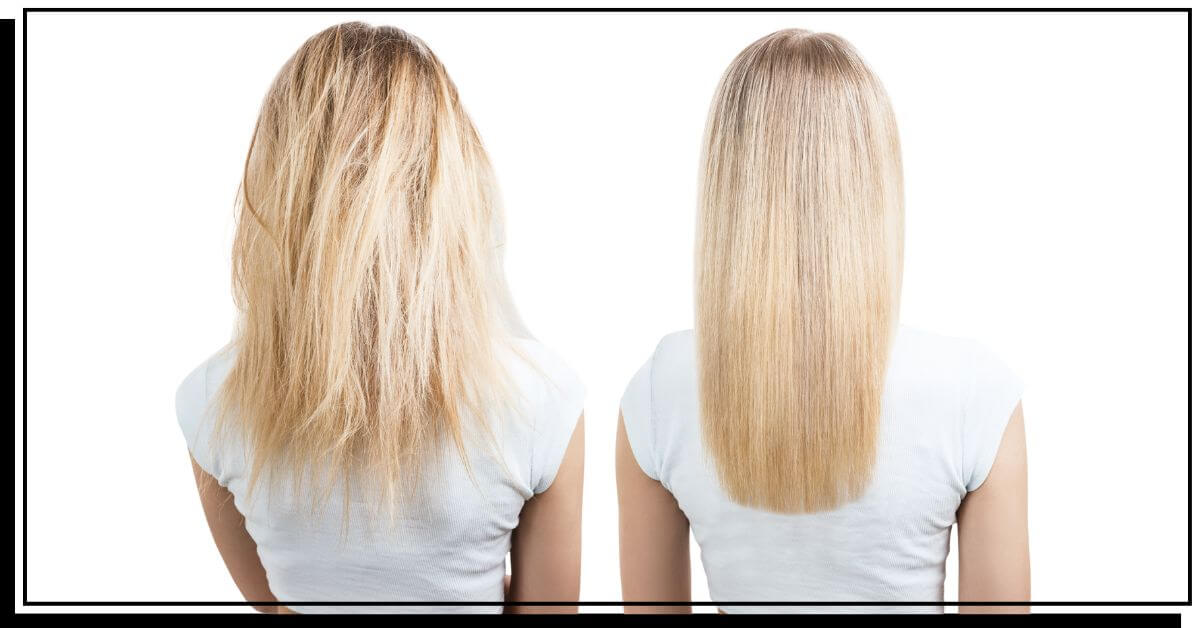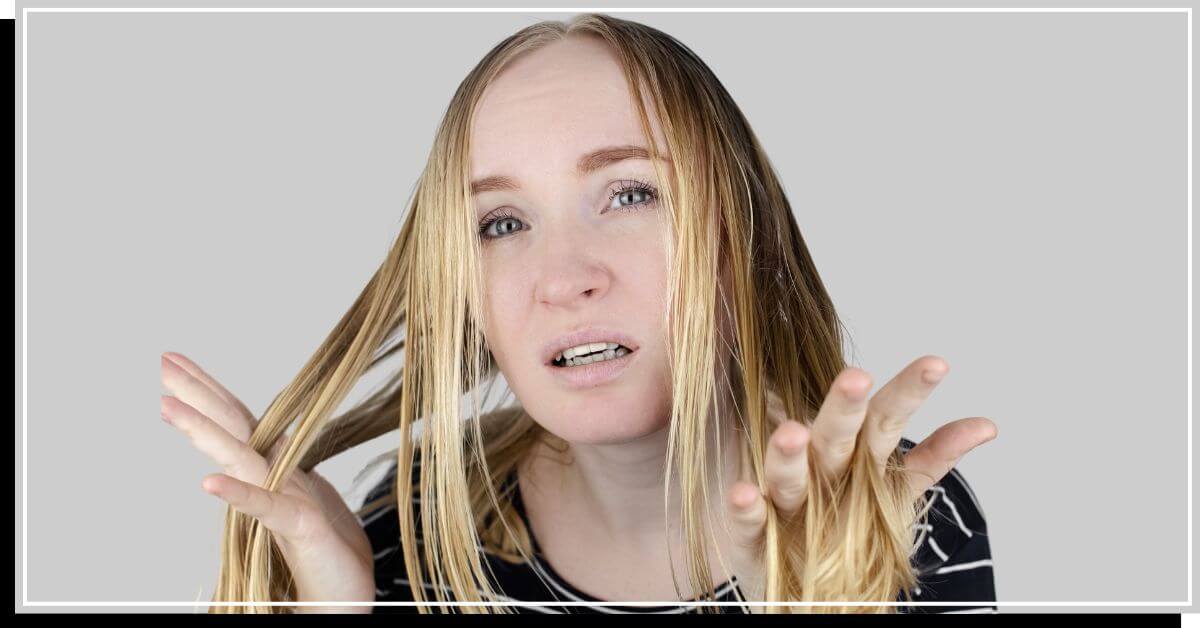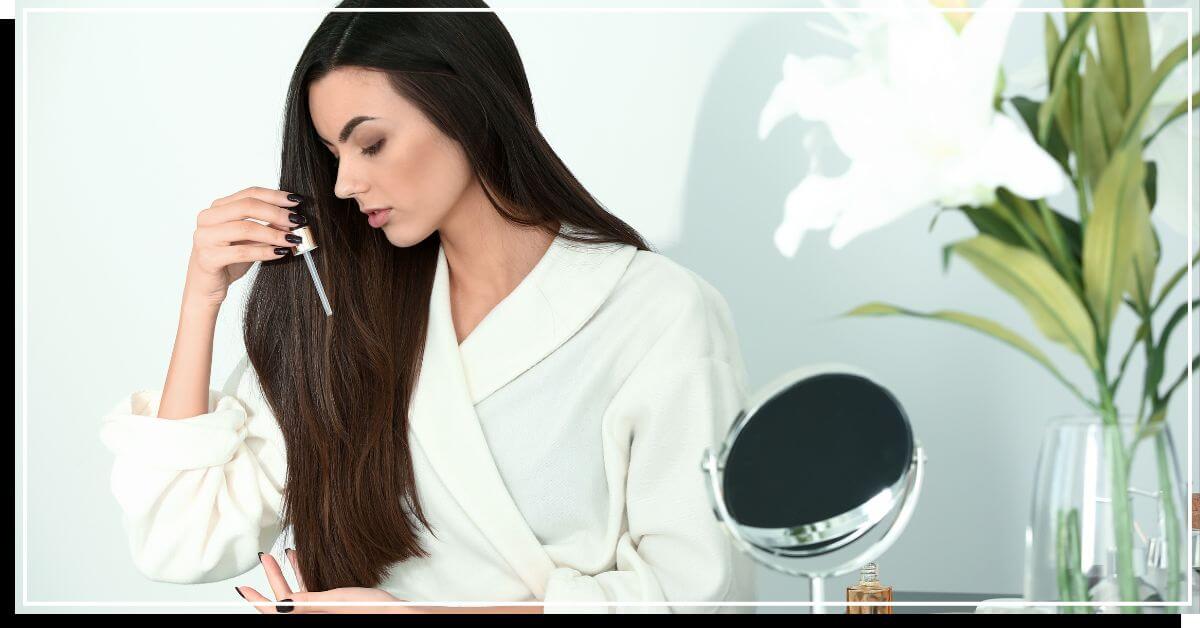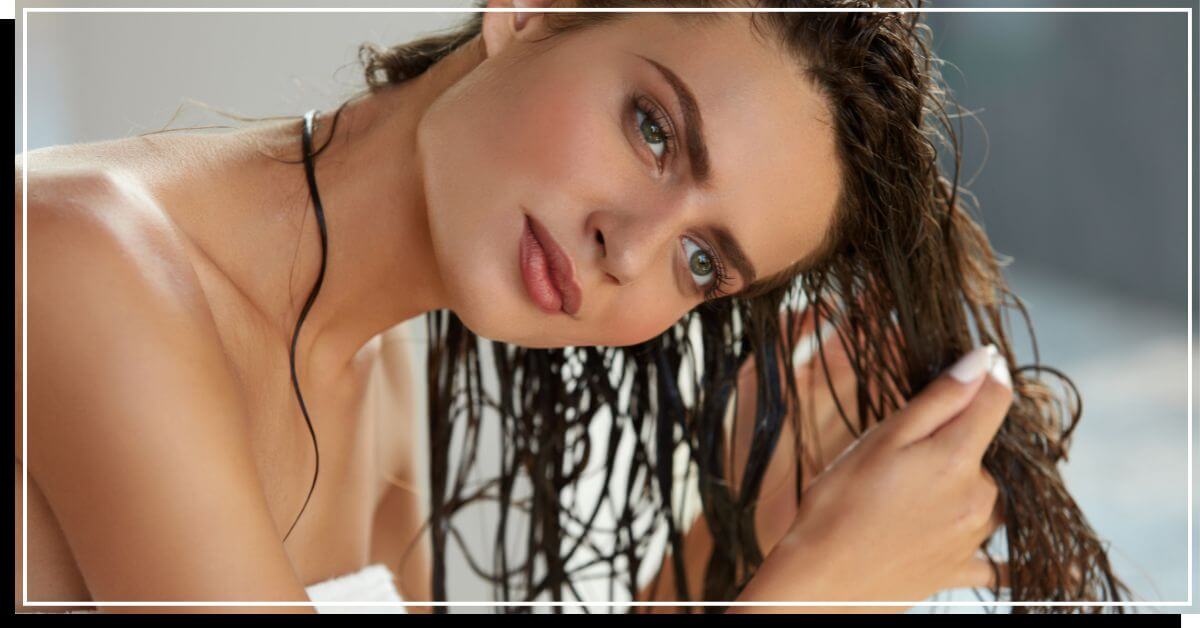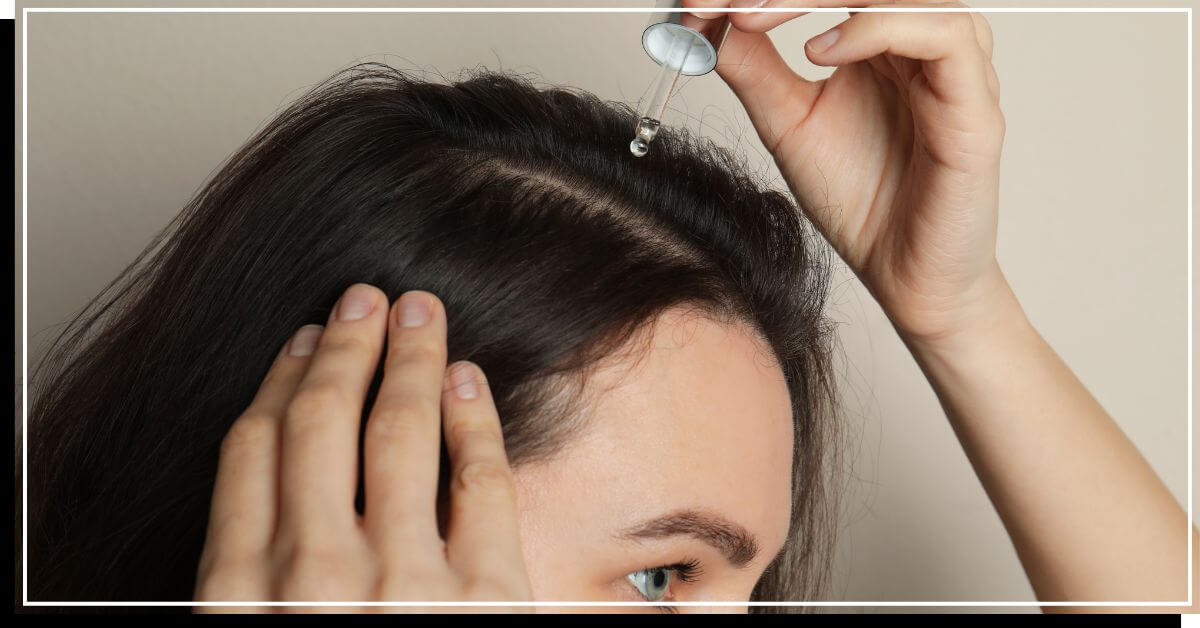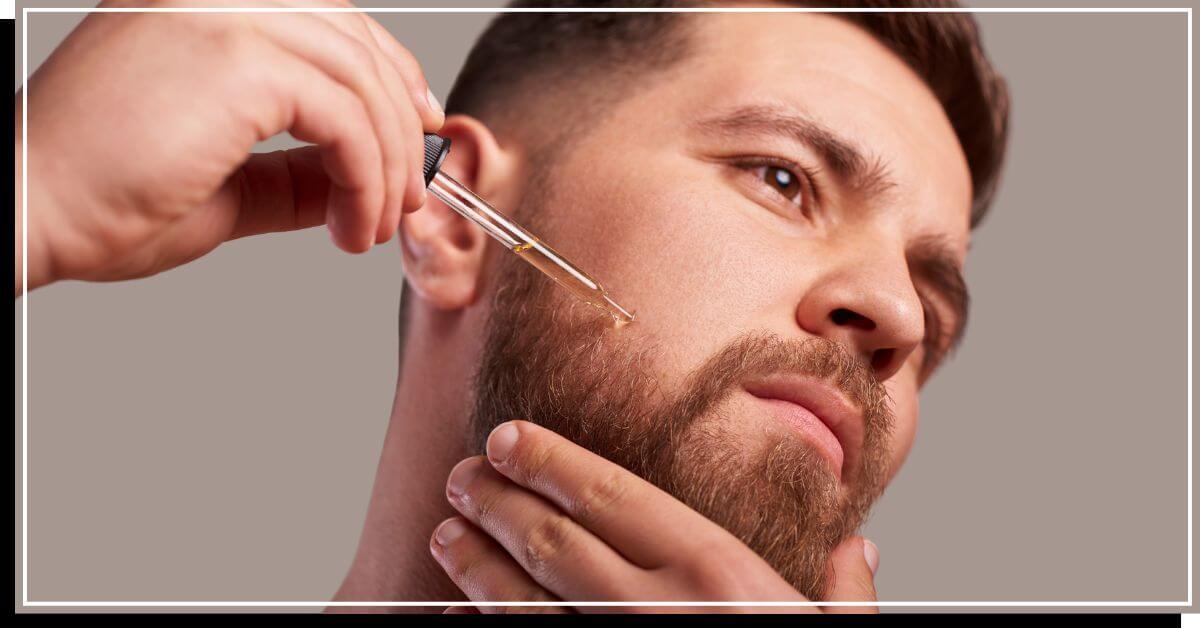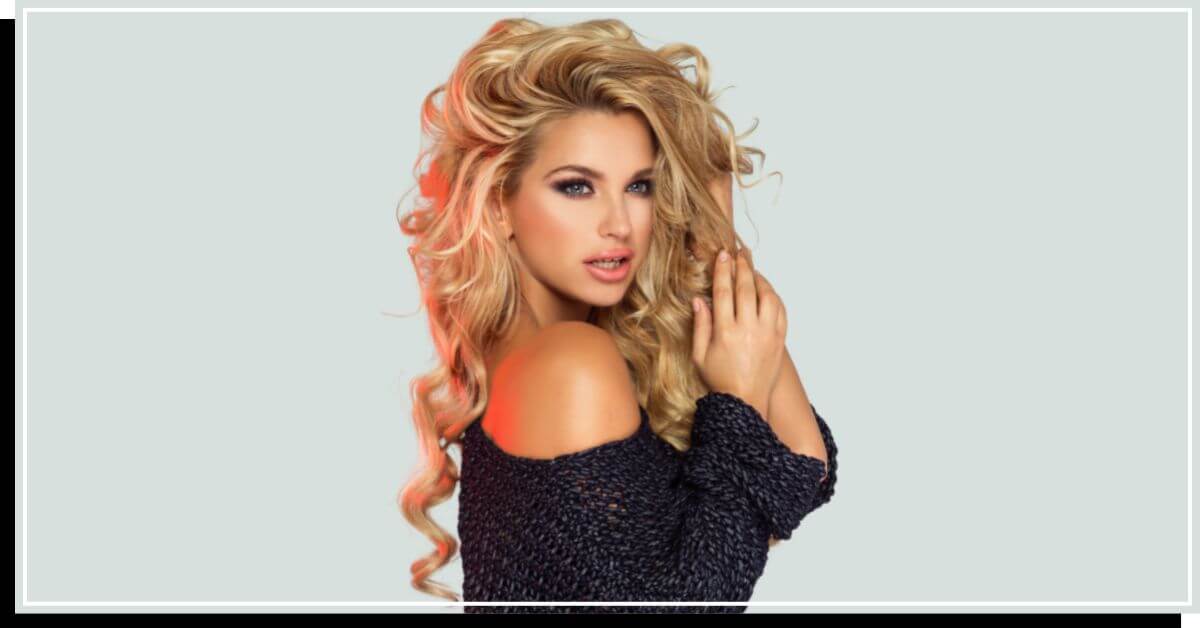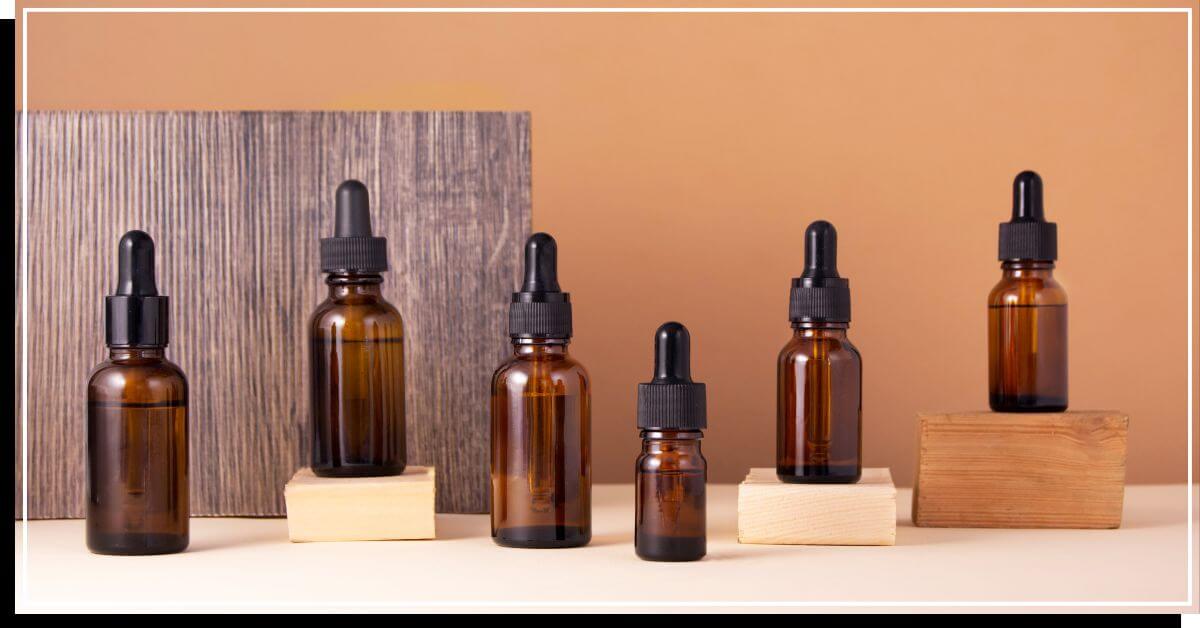7 Amazing Ways Jojoba Oil Helps Your Hair Shine
As hairdressers, we spend a lot of time in school learning about different ingredients. We study things like how long preservatives last and how to use natural oils. Because of this, we often learn about new trends before they become popular.
Jojoba oil for hair is a great example of this trend. This natural oil has been used in beauty and cosmetics since the 1960s. However, only recently have most people started to pay attention to it.
Erin Black owns Lucky Lu’s salon in Denver, CO. She explains, “Jojoba oil and other oils with small molecules work well for every hair type. Their tiny size helps them soak into hair strands better, giving deep moisture.”
“Since it absorbs better, your hair will have less residue left behind,” she explains.
Curious if this product truly deserves all the hype? You’re in the right spot. I talked with expert hairstylists to find out what jojoba oil actually does for your hair.
In this guide, you’ll learn all about:
What is Jojoba Oil?
Jojoba oil is made by cold-pressing the seeds of the jojoba tree, also called Simmondsia Chinensis. Since the 1960s, skin experts, beauty specialists, and hair care professionals have praised its benefits.
Modern science explains why jojoba oil works so well. It is full of important nutrients that keep your hair and scalp healthy. These include vitamin E and essential fatty acids. (source)
Even better, jojoba oil closely matches the natural oil on your scalp, called sebum. Sebum is important for a healthy scalp and hair. It gives moisture and nutrients that make your hair soft, shiny, and easy to comb. Sebum also helps prevent dry scalp and dandruff.
Jojoba oil provides many benefits since it closely mimics the natural oils your skin produces, called sebum. (source)
Benefits of Jojoba Oil
Jojoba oil contains fatty acids, vitamin E, and antioxidants. It helps reduce inflammation and soothes soreness, itching, dandruff, scalp acne, and psoriasis. Because jojoba is water soluble, it washes out easily without leaving any residue. (source)
Moisturizes from the inside out. Each hair strand easily accepts jojoba oil because it is similar to your hair’s natural oils. This allows the oil to soak in deeply, hydrating your hair from within. It makes your hair softer and shinier without making it feel heavy. (source)
Rebuilds and fixes damaged hair. Sebum naturally keeps hair soft and moist from the scalp down. However, in thick or curly hair, it often doesn’t reach the middle or ends. Jojoba oil provides important nutrients that your hair lacks. (source)
Boosts smoothness and shine. Healthy hair looks smooth and shiny because each layer has enough moisture and protein. Jojoba oil provides both, helping your hair stay soft and glossy every day. (source)
Anti-hair loss. Many factors can cause hair loss. If your hair is thinning because of damage or breakage, jojoba oil can help. It makes your hair strands and follicles stronger. A study showed that using jojoba oil regularly greatly reduced hair loss caused by breakage. (source)
Boosts hair growth. Jojoba oil can help your hair become thicker and longer. However, a recent study shows it does not speed up hair growth. (source) Jojoba oil mainly protects your hair from damage and breakage. If damage slows your hair growth, using jojoba oil can help it grow healthier, longer, and thicker.
Fights dandruff and soothes eczema and dry scalp. Jojoba oil keeps your scalp healthy because it has antibacterial and antifungal effects. It helps balance your scalp’s pH, whether your skin is oily or dry. (source)
Detangles and prevents new tangles. A little jojoba oil stays on the outside of your hair, covering the cuticle. The cuticle is like tiny clear scales on each hair strand. When you brush or comb roughly, these scales lift up, causing tangles. Jojoba oil smooths the cuticle, making it easier to detangle and helping stop new tangles from forming. (source)
Potential Downsides
I haven’t met anyone who couldn’t use jojoba oil for something. Still, using too much can be a problem.
Jojoba oil soaks into your hair more effectively than man-made products. However, it does not fully absorb. Some of the oil remains on the surface of your hair. Because of this, using too much can leave your hair looking oily throughout the day.
Previous research and testing show almost no side effects. Allergic reactions to jojoba oil are very uncommon, especially when applied to the skin. (source)
How to Use Jojoba Oil for Hair
Jojoba oil can help all hair types in some way. But each hair type has its own needs. To get the best results, use jojoba oil in a way that matches your hair type.
Jojoba Oil Hair Mask
In my experience, jojoba oil alone is not the best choice for a hair mask. It works much better when mixed with other oils or added as an ingredient in a hair mask.
When: If your hair is fine or natural, do this about once a month or once every season. If your hair is coarse, very processed, or frizzy, you can do it up to twice a month.
Where: Start by applying the oil to your hair ends, as they often need the most care. Then gently work the oil up toward the middle of your hair, which is usually in better condition.
How:
Pre-Shampoo Treatment
Similar to coconut oil, using this before your shower helps shield your hair from damage, breakage, and frizz during washing. Wet hair is very delicate. If you notice a lot of hair falling out when you wash it, this treatment can really help protect it.
When: Before you wash your hair. It’s safe to do this before each wash, but you can also do it every other time or whenever you prefer.
Where: All over your head. You don’t want your hair to look greasy like it’s soaked in jojoba oil. Instead, aim for a thin, even coat from the roots to the tips.
How:
Don’t worry if you see more hair falling out the first time. This shows you had many dead hairs that needed to come out. If you brush regularly, you will notice much less hair fall over time.
Shampoo and Conditioner
Jojoba oil is lighter than coconut oil, so you can easily add it to your shampoo or conditioner.
When: You can safely do this each time you wash your hair. If your hair is fine, try doing it every other wash at first to prevent too much oil buildup.
Where: Shampoo works best on your scalp and hair roots, so apply it there. Conditioner is meant for the middle and ends of your hair.
How:
Leave-in Conditioner
Jojoba oil is a great natural heat protectant. (source) It also helps untangle hair and makes it softer, so it works well as a leave-in conditioner.
When: Whenever your hair feels dry or rough after washing.
Where: Mainly apply to the middle and ends of your hair. If your hair is very damaged, you can also use a small amount on the roots.
How:
Styling Product
Just a tiny bit of jojoba oil can work like many chemical hair serums. It helps make your hair shiny and soft, especially after using a blow dryer or heat styling tools.
When: If your hair is not fine, you can use this method each time you style it. For fine hair, try to save this technique for special events only.
Where: Apply mainly to the middle and ends of your hair. If your hair is very frizzy, dry, coarse, or heavily treated, you can also use a little on the roots.
How:
Jojoba Oil Scalp Treatment
Jojoba oil works well to soothe a dry scalp. It also helps reduce dandruff. The best part is that jojoba oil won’t block your hair follicles or pores since it is non-comedogenic. (source)
When: Begin by doing this once every season or once a week. If you don’t notice quick results, try doing it more often.
Where: Across your entire scalp, but avoid applying it to your hair.
How:
Beard and Mustache Treatment
Jojoba oil works well on facial hair, too. Beards and mustaches often become wild and hard to manage. This happens because facial hair has a different chemical makeup than scalp hair. (source) Adding moisture with jojoba oil helps soften these rough hairs and makes them easier to control.
When: You can safely apply jojoba oil to your beard and mustache every day. Begin by using it once or twice a week, then use it daily if your skin and hair respond well.
Where: All over your beard, mustache, and sideburns, especially if those hairs are out of place.
How:
Hair Type Considerations
Jojoba oil works well on every hair type, including natural and color-treated hair. Its molecules are smaller than those in many other natural oils like coconut oil. This helps it soak deeper into your hair than most other oils.
Simply put, even if your hair is very thin, you should think about using jojoba oil in your hair care routine. Now, let’s explore each hair type in more detail.
Thick, Heavily Processed, or Curly Hair
If your hair is thick, very curly, or has been heavily treated, jojoba oil offers many options. Almost every type of treatment with it can help improve your hair and scalp.
Your hair needs extra moisture and protein compared to other types. So, it’s less likely to get overloaded. This gives you more freedom each time you apply products.
It may seem strange, but this oil works well for natural hair, heat-damaged hair, and dry hair. Its tiny molecules and similarity to your scalp’s natural oils make it a smart option for all these hair types.
Gray hair is similar. When hair turns gray, its follicle makes less oil. (source) This is why gray hair often feels rough and wiry. Jojoba oil adds back the missing moisture, helping gray hair feel softer and look smoother.
To begin, think about which benefits matter most to you and focus on those treatments first. You can try a scalp treatment along with a fast hair mask together. Leave both on for 20-30 minutes, then rinse everything out.
Try adding jojoba oil to your shampoo, conditioner, or even both to see which works best for you.
Whichever method you choose, your hair should look softer and shinier. If you don’t see results, try using it more often or apply jojoba oil as a styling product as well.
Fine or Oily Hair
If you have fine hair or an oily scalp, be cautious with natural oils. Adding extra oil often does not help in these situations.
Jojoba oil works better for fine hair compared to coconut oil. Its smaller molecules soak into your hair more easily than coconut oil does.
However, begin by using just a little bit and avoid applying it too often. Using too much jojoba oil on your hair can make it feel heavy and oily. So, what are the best ways to use it? You can try it as a pre-shampoo treatment, mix it into your shampoo or conditioner, or use it for scalp care.
Dandruff happens because of an oily scalp, not a dry one. (source) People with fine hair often get dandruff. Jojoba oil fights fungus and helps balance your scalp’s pH. This is why I suggest using jojoba oil treatments for oily scalps and dandruff.
Begin this treatment every 2 to 4 weeks, based on how bad your flakes are. I rely on it during hot, humid summers when my scalp becomes very sweaty and oily.
Medium Density or Color Treated Hair
From what I’ve seen, jojoba oil works best for people with this hair type. If you have medium density, frizzy, or color-treated hair, your hair likely needs more moisture but not more protein. (source)
While jojoba oil can restore some lost protein, it mainly works well to add moisture back into your hair.
Each way of using jojoba oil can help your hair. But you probably don’t need to use all of them all the time. For example, my hair fits this case. I mostly use jojoba oil in two ways: before shampooing and as a leave-in conditioner.
I do these two things every couple of weeks to keep my hair healthy. When the seasons change, my scalp often gets flaky. So, I use a scalp treatment during those times.
Choose one or two products and test them. If you like how they work, keep using them for the season. When the weather shifts, check your results again. If you don’t notice much improvement, try using them more often or switch to a new product.
Everyone is unique, and there are no right or wrong answers!
Best Oils to Mix with Jojoba Oil
Earlier, I shared that jojoba oil is a great carrier oil. Carrier oils are mild, natural oils with a light scent. They help dilute strong essential oils.
Jojoba oil soaks deep into your hair, nourishes your scalp, and smooths the outer layer of each strand. It also makes any other oil you blend with it work even better. Here are my top three favorites…
Tea Tree Oil: Pure tea tree oil fights inflammation, fungus, and germs. (source) Do not put it straight on your skin. Mix 1 to 3 drops of tea tree oil with one tablespoon of jojoba oil. This blend is a strong, natural way to treat your scalp. It helps reduce dandruff, soothe eczema, and fix dry scalp. (source)
Rosehip Oil: Rosehip oil is rich in vitamins and contains omegas 3, 6, and 9. (source) Unlike jojoba, rosehip oil has a different makeup. It mostly stays on the surface of your hair. But when mixed with a strong carrier oil like jojoba, it can deeply nourish your hair and provide complete care.
Combine ¾ tablespoon of rosehip oil with 1 tablespoon of jojoba oil. If your hair is long or thick, double these amounts. You can use this blend as a hair mask, leave-in conditioner, scalp treatment, or for caring for your beard or mustache.
Argan Oil: Argan oil is one of the best natural oils for hair. Its tiny molecules let it deeply nourish your hair. (source) It has more antioxidants than jojoba oil. However, jojoba oil is better for adding light, shiny gloss without weighing hair down.
Mix equal amounts of both to make a powerful scalp treatment, hair mask, or beard and mustache care solution.
Advice on Buying Jojoba Oil for Hair
Now that you’ve learned the great benefits of using jojoba oil on your hair, it’s time to buy some. But be careful—many fake or low-quality products are out there. To get the best jojoba oil for your hair, scalp, or beard, keep these six important tips in mind:
Color- Pure jojoba oil has a warm, golden-yellow color. It looks clear but with a golden tint. If the oil is completely clear, it likely went through extra processing. This can remove many of its helpful benefits. (source)
Scent- Virgin unrefined jojoba oil usually has little or no smell. Sometimes, it has a light nutty or smoky scent, which is normal. You might not notice any scent at all. As long as the oil has the correct color, no smell does not mean it has been refined. (source) However, if reviews say the oil smells sour, fishy, or strange, avoid using it.
Absorbency- Fake jojoba oils often mix a little real oil with many fake chemicals. How can you tell before buying? Read the reviews. Real jojoba oil soaks into the skin quickly. If people say the oil just sits on the skin and does not absorb, it is likely a fake.
Extraction Method- Choose cold-pressed jojoba oil for your hair. When companies use heat-pressing, they can make oil faster, but it loses many of its helpful properties. (source) In my experience, heat-pressed jojoba oil does not offer any benefits.
Price- Cold-pressed organic jojoba oil usually costs between $1.50 and $5.00 per fluid ounce. The price often depends on whether it is certified organic. Buying in larger amounts can help you save money. If you find jojoba oil priced far above or below this range, it may not be good quality. I suggest avoiding those options.
Sourcing- For natural products, sustainability is very important. I look for brands that are certified as sustainable, organic, and cruelty-free. If a company does not commit to these values, I see it as a warning sign.
I have gotten expired or faulty products from these brands a few times, so I like to be careful. Also, it feels great to care for your hair with products that are made in a way that is good for the planet.
Frequently Asked Questions
Will jojoba oil cause hair color to fade?
No, jojoba oil will not make your hair color fade. In fact, it can help your color stay vibrant for a longer time. (source)
I think I know why this myth keeps going. Jojoba oil is great for hair because it soaks in deeply. Like I mentioned before, its makeup is very close to the natural oils your scalp produces.
This explains why jojoba oil soaks into your hair so easily. Some people believe this means it goes even deeper. Since the oil reaches far inside the hair shaft, they wonder if it might push out some of the color molecules from your hair. Is that true?
Incorrect. Another reason this question keeps coming up is because many people use temporary, demi-, or semi-permanent hair colors. These types of dyes fade after just a few weeks. Often, when someone tries a bold semi-permanent color, they also start using better hair products, such as jojoba oil.
Many believe jojoba oil causes hair color to fade. However, studies reveal that jojoba oil actually helps keep hair color bright for longer. (source)
How often should you apply jojoba oil to your hair?
You can apply jojoba oil every day, once a week, or once a month, based on your needs.
Using scalp treatments once a week or once a month can help keep your scalp healthy. Doing them more than once a week will not give extra benefits.
For styling, apply jojoba oil every day or every few days. This is very helpful if your hair is thick or has been treated a lot.
This oil works well for all hair types. If your hair is fine, add a little to your shampoo or conditioner once a week. For curly, thick, or damaged hair, use it as a leave-in conditioner.
If your hair is average in thickness and not very damaged, try using a jojoba oil hair mask once every two weeks. Notice how it affects your hair over time.
These ideas are only suggestions. Try different ways and products to see what suits you best. If you think you used too much, simply wash and condition your hair as usual.
How long does jojoba oil take to work?
Using jojoba oil just once is usually enough to see results. I notice this every time I apply it, whether on myself or a client at the salon. The difference is clear right away.
If using jojoba oil doesn’t make your hair feel softer, shinier, or smoother, there could be a few reasons why. This also applies if a scalp treatment doesn’t seem to help.
It probably depends on how much you applied. Jojoba oil soaks into hair very easily. If your hair is dry or needs nutrients, it will absorb the oil quickly. Synthetic hair serums stay on the surface, so you usually need less to see a shiny look.
The second possible reason is your timing. Even if you used the correct amount, it might not have stayed on long enough. This is true for any treatment you rinse out. Try repeating the treatment and leave it on for 10 more minutes.
Lastly, it could be past its expiration date. When I rarely find expired jojoba oil, it has a strong sour smell. I throw it away right away because expired products no longer provide their original benefits.
How can you tell if your jojoba oil has gone bad?
You can tell jojoba oil has gone bad if it:
Never use expired jojoba oil on your hair. It can lower the natural vitamins in your hair and scalp. (source)
Should you use jojoba oil on wet or dry hair?
Use jojoba oil on damp hair as a hair mask, shampoo, conditioner, or leave-in conditioner. On dry hair, it works well as a pre-shampoo treatment, styling aid, or for caring for your beard or mustache.
Both methods work well. It depends on the kind of application you want. For dry hair, use much less oil. Too much oil on dry hair can make it look greasy and dull.
Can jojoba oil promote hair growth?
Jojoba oil may help your hair become longer and thicker, but it does not speed up hair growth. (source) Research comparing jojoba oil to Rogaine and peppermint oil—two proven ways to grow hair faster—shows little difference in results.
Rogaine and peppermint oil work best to help hair grow faster. (source) However, if you want longer or thicker hair, jojoba oil is a good choice.
Which one is better for hair, argan oil or jojoba oil?
Experts say that both argan oil and jojoba oil are great for your hair. They are rich in vitamin E and healthy fats. These nutrients help keep your hair and scalp strong and healthy in many ways.
I suggest you try both to find out which one suits you best. Argan oil has a bit more antioxidants, which help with gray or color-treated hair. Jojoba oil is very similar to your scalp’s natural oils, making it great for light, non-greasy moisture. (source)
I like to keep a bottle of each oil in my bathroom. I often mix them to get the benefits of both. You can also switch between them daily. Both oils work well for any hair type!


